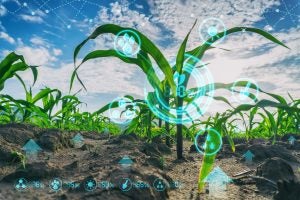I don’t believe it! For years I have been reading articles and books that say we must eat less meat and more plants to save the planet. Then, in the September 23 issue of New Scientist, a story caught my eye: Humans Are Using Too Many Plants. The leader under the title reads, “We are using 26 percent of the biomass produced by plants, which is more than is safe.”
It goes on to say, “We are “leaving too little for wildlife and putting at risk the biosphere on which all life depends. Too keep the planet in a suitable state for civilization we should be using no more than a tenth of plant biomass.” That way we can keep the Earth “in a state similar to that during the 10,000 years leading up to the industrial revolution,” which is said to have started in about 1750 and gained steam after 1850, when world population was bout 1.2 billion people.
So what do we do with the 7 billion excess people the Earth now supports?
The article states the Earth produced 56 gigatonnes (that’s 56,000,000,000,000 metric tons) of biomass a year in pre-industrial times and now produces 66 gigatonnes per year “due to higher carbon dioxide levels.” Humans, animals, fish, insects, etc., use about 17 gigatonnes per year. No mention of the enormous yield increases of agricultural plants in the last 75 years, due to plant breeding, fertilizers, and pesticides. These breakthroughs have enabled the world’s farmlands to feed 8 billion people.
And if politics and Ludditeism doesn’t get in the way, we will have no trouble feeding 11 billion in the last half of this century, which is the point most demographers expect the world population to level off. And also preserve most of our wildlands.
The ability to extract nitrogen from the air synthetically is probably the most important factor increasing yields up to the present, along with variety improvements that enable extra nitrogen use. Without synthetic fertilizer, it is estimated the Earth could support no more than 4 billion people. Think about it: One-half of the nitrogen in the average human body was synthetically produced, whether a person likes it or not. Furthermore, people’s proteins and DNA don’t care where the nitrogen came from.

The people quoted by the author think it’s a big mistake to use plants for fuel. Land should be used to produce food, not fuel. Land not needed for food should be left for wildlife and native plants. If making fuel from plants was prohibited in the U.S., millions of acres of soybeans and corn would have no market. Forty percent of corn production is used for ethanol, a process accused by some of not being carbon neutral. In any calculation, at least most of the carbon released when the ethanol is burned originally came from the atmosphere.
Five percent of the soybean crop is used for biodiesel. And plans are being made to drastically expand fuel production from vegetable oils, which can be made into kerosene for jet fuel as well as diesel. And so, expect to hear more backlash about using forests and marginal lands for biofuel production. Not expected to be much of a problem in the U.S., as we are pretty much maxed out on farmland. But Brazil, for instance, has lots of forest and savanna land that could be converted to soybean production. I would agree that that is not healthy for the planet or wildlife. The farmers of the world need to concentrate on producing more on the land already under cultivation.
Activists, of course, would like to see all of that acreage now used for fuels abandoned and turned into wildlands. Europe is putting so many restrictions on what fertilizers and pesticides farmers are allowed to use that many are calling it quits, returning the land to wildlife. Europe already imports a lot of food from Africa and other countries, an activity that is bound to increase mightily in future decades.
We do need to reduce our dependence on fossil fuels that release CO2 that was sequestered millions of years ago. I see no problem using some farmland for fuel production so long as the world is well-fed. And in that regard, hunger in the world today is a problem of poor governance and distribution, not supply.
I am encouraged by efforts to collect CO2 emissions from essential industries and store it deep underground, or convert it to useful products, even fuels such as kerosene. I don’t see the internal combustion engine going away, but I do see it being powered by hydrogen. And opposition to the best carbon-free power — nuclear energy — is beginning to fade.
If extremism on the right and the left around the world can be brought under control, I see a bright future for my great grandchildren. The USA must lead the way!
Jack DeWitt is a farmer-agronomist with farming experience that spans the decades since the end of horse farming to the age of GPS and precision farming. He recounts all and predicts how we can have a future world with abundant food in his book “World Food Unlimited.” A version of this article was republished from Agri-Times Northwest with permission.



